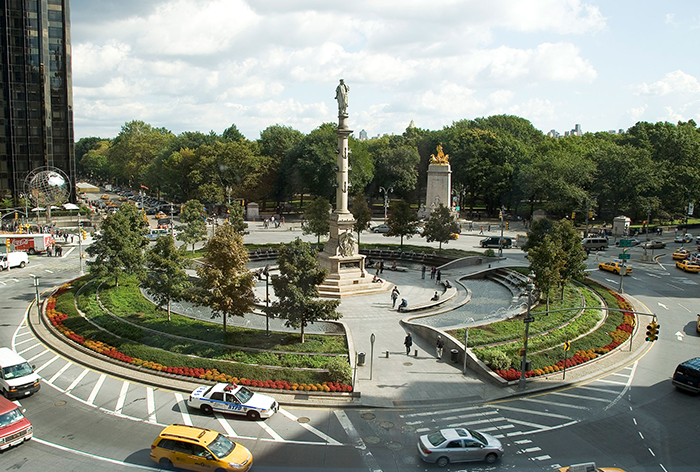File Photo
The Columbus Circle statue was created in 1892 by renowned Italian sculptor Gaetano Rosso, and funded by Italian-American immigrants.
By Michael V. Cusenza
Columbus stays in his Circle.
Mayor Bill de Blasio on Friday announced that the City will keep the Columbus monument in place and take additive measures to continue the public discourse, including placing new historical markers in or around Columbus Circle explaining the history of Christopher Columbus and of the monument itself, and commissioning a new monument, at a location in the city not yet determined, recognizing Indigenous peoples.
The fate of the Columbus figure was part of a larger announcement of decisions on several monuments on City properties, made after consideration of the recommendations and guidelines laid out in a report provided by the Mayoral Advisory Commission on City Art, Monuments and Markers.
In August, following the deadly “Unite the Right” rally in Charlottesville, Va., de Blasio pledged to appoint a panel to review all City monuments over a 90-day period. Throughout the review, the commission also conducted extensive engagement with the public: more than 500 individuals attended public hearings in each of the five boroughs, with nearly 200 offering verbal testimony, and an online survey received more than 3,000 responses.
In addition to the Columbus statue, the mayor decided on the following three sites:
• J. Marion Sims statue (5th Avenue/103rd Street, Manhattan)
The City will relocate the statue to Green-Wood Cemetery and take several additional steps to inform the public of the origin of the statue and historical context, including the legacy of non-consensual medical experimentation on women of color broadly and Black women specifically that Sims has come to symbolize.
• Canyon of Heroes/Henri Philippe Pétain plaque (Broadway, Lower Manhattan)
The City will keep all markers memorializing ticker-tape parades in place and explore opportunities to add context such as wayfinding, on-site signage, and historical information about the people for whom parades were held. The Downtown Alliance has also partnered with the Museum of the City of New York to research more detailed biographical information on the individuals with markers along Broadway, and will make this information accessible through an app and web page.
• Theodore Roosevelt statue (American Museum of Natural History)
The City will keep the monument in place and partner with the museum to provide additional context on-site through signage and educational programming, which can offer multiple interpretations of the sculpture, the artist’s intentions, and the nature of the piece as part of the history of AMNH.
The mayor noted that the commission’s report made the argument for expanding the histories that are represented on City property through historical research and education, and by adding to the communities, individuals, and histories that are represented in statues, monuments, and markers. To support this effort, the Department of Cultural Affairs will commit up to $10 million in capital funds over the next four years to create new permanent artwork honoring various communities that are underrepresented on City property.
Additionally, the Ford Foundation has announced a grant of $250,000 to establish the NYC Public History Project, supporting academic review of items on City property and history, how these two intersect, and where there are opportunities to expand the history represented on public property to reflect the shared past of New Yorkers more fully.

